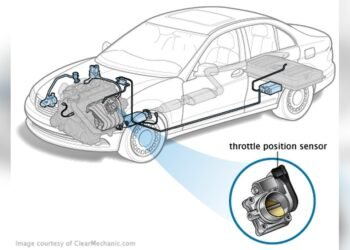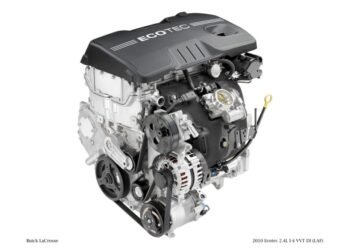Common problems with a Cub Cadet zero turn hydrostatic transmission include misalignment of the transmission control rod and cavitation due to air in the system. These issues can cause the tractor to rock or lack power.
It is important to perform regular maintenance and address any signs of trouble promptly to ensure the longevity of the hydrostatic transmission. Fluid leakage and worn seals are also common concerns with hydrostatic transmissions, which can result in reduced performance.
Common Problems With Hydrostatic Transmission
Hydrostatic transmission is a popular technology used in various vehicles and machines, including zero turn mowers like the Cub Cadet. While hydrostatic transmission offers many advantages, such as smooth operation and infinite speed adjustment, it is not without its issues. In this post, we will discuss two common problems that can occur with hydrostatic transmission: misalignment of the transmission control rod and cavitation in the transmission system.
Misalignment Of Transmission Control Rod
The transmission control rod plays a crucial role in the operation of the hydrostatic transmission. However, it is not uncommon for the control rod to become misaligned, especially in older Cub Cadet models. When the control rod is misaligned, the tractor may rock slightly forward or backward while idling in neutral, causing issues with the hydrostatic transmission.
To troubleshoot this problem:
- Inspect the control rod for any signs of misalignment or damage.
- If the control rod is misaligned, adjust it according to the manufacturer’s instructions.
- Ensure the control rod is properly secured and tightened.
- If the control rod is severely damaged, consider replacing it with a new one.
Cavitation In The Transmission System
Cavitation is another common problem that can occur in hydrostatic transmission systems, including those in zero turn mowers. Cavitation refers to the presence of air in the hydraulic fluid, which prevents the pump from generating the necessary pressure to power the transmission.
To address cavitation in the transmission system:
- Check the hydraulic fluid level and add more if necessary.
- Bleed the system to remove any air bubbles.
- If the problem persists, inspect the hydraulic lines and fittings for leaks or damage.
- Repair or replace any damaged components as needed.
Tractor Rocking Issue
The tractor rocking issue is a common problem experienced by users of Cub Cadet zero-turn mowers. This issue occurs when the transmission control rod is misaligned, leading the tractor to rock slightly forward or backward while the engine is running at high idle speed in the neutral position. Understanding the causes and effects of this problem is crucial in troubleshooting and resolving hydrostatic transmission issues.
Effect Of Transmission Control Rod Misalignment
The misalignment of the transmission control rod can result in the rocking motion of the tractor, causing discomfort and hindering the mower’s performance. This misalignment often occurs due to wear and tear or improper maintenance. Additionally, inadequate lubrication and debris accumulation can also lead to this issue.
Cub Cadet Zero Turn Transmission Weakness
The Cub Cadet Zero Turn hydrostatic transmission may have a weakness, often resulting from misalignment of the transmission control rod. This can cause rocking when the engine is idle in neutral. Proper troubleshooting and maintenance are essential to address these issues.
Cub Cadet Zero Turn Transmission Weakness Understanding Weakness of the Hydrostatic Transmission A common issue with Cub Cadet zero-turn mowers is the weakness of the hydrostatic transmission. The hydrostatic transmission is an essential component responsible for transferring power from the engine to the wheels, allowing for smooth operation. Looking at Belt and Tension Mechanism The belt and tension mechanism in the hydrostatic transmission can experience wear and tear over time. This can lead to issues such as slipping belts or improper tension, affecting the overall performance of the mower. Common Problems with Hydrostatic Transmission Fluid leakage due to worn seals or damaged components is a prevalent problem in hydrostatic transmissions. Correct maintenance is crucial to prevent such issues and ensure optimal performance. Troubleshooting Hydrostatic Transmission Proper troubleshooting of the hydrostatic transmission involves inspecting the belt and tension mechanism, checking for any signs of wear or misalignment. Addressing these issues promptly can help in avoiding costly repairs and downtime. Fixing Weak Cub Cadet Zero Turn Transmission To fix a weak Cub Cadet zero-turn hydrostatic transmission, it may be necessary to replace the charge pump cover and perform a thorough inspection and maintenance routine. This can help restore the functionality and efficiency of the transmission. Ensuring Longevity of the Transmission Regular maintenance, including checking the belt tension, monitoring fluid levels, and addressing any leakage promptly, can extend the lifespan of the hydrostatic transmission on a Cub Cadet zero-turn mower. Proper care and attention can prevent major issues and ensure smooth operation.Maintenance And Longevity
Proper maintenance is crucial for ensuring a long lifespan of your Cub Cadet zero-turn hydrostatic transmission. By following correct maintenance practices, you can avoid common problems and keep your equipment running smoothly. Let’s delve into the key aspects of maintenance and longevity.
Correct Maintenance For Long Transmission Life
Regular maintenance is essential to keep your Cub Cadet zero-turn hydrostatic transmission in top condition. Here are some tips to ensure long transmission life:
- Check Fluid Levels: Regularly inspect and maintain proper fluid levels to prevent overheating and premature wear.
- Inspect for Leaks: Look for any signs of fluid leaks and address them promptly to avoid damage to the transmission.
- Clean Cooling Fins: Keep the cooling fins clean to prevent overheating and maintain optimum performance.
- Follow Maintenance Schedule: Adhere to the manufacturer’s recommended maintenance schedule for timely tune-ups and servicing.
Ensuring Longevity Of Your Transmission
Extending the lifespan of your Cub Cadet zero-turn hydrostatic transmission requires proactive care and attention. Here are some additional steps to promote longevity:
- Avoid Overloading: Operate your equipment within recommended weight limits to prevent strain on the transmission.
- Engage Properly: Follow correct operating procedures when engaging the transmission to prevent unnecessary wear and tear.
- Store Properly: Store your equipment in a clean, dry environment to prevent corrosion and damage.
By following these maintenance practices and longevity tips, you can ensure that your Cub Cadet zero-turn hydrostatic transmission operates efficiently for years to come.
Diagnosing And Troubleshooting
When it comes to Cub Cadet zero turn hydrostatic problems, it’s important to be able to diagnose and troubleshoot the issues efficiently. Hydrostatic transmission problems can arise due to a variety of reasons such as misalignment, fluid leakage, or air in the system. By understanding the common issues and knowing how to address them, you can keep your Cub Cadet running smoothly. In this section, we will cover essential troubleshooting tips to help you quickly identify and resolve hydrostatic drive problems.
Hydrostatic Drive Troubleshooting Boot Camp
One of the first steps in troubleshooting hydrostatic drive problems is to attend a hydrostatic drive troubleshooting boot camp. These boot camps are designed to provide comprehensive training on diagnosing and fixing transmission issues. CD Industrial Group Inc. offers a highly recommended boot camp course that covers common hydrostatic drive problems and their solutions. Attending a boot camp will help you develop the skills and knowledge necessary to effectively troubleshoot and repair your Cub Cadet’s hydrostatic transmission.
Fast Solutions For Transmission Problems
When you encounter transmission problems with your Cub Cadet zero turn, the key is to act quickly. Here are some fast solutions to common transmission problems:
- Check for misalignment: One common problem is misalignment of the transmission control rod. This can cause the tractor to rock forward or backward when idling. Inspect the control rod and adjust it if necessary.
- Address fluid leakage: Fluid leakage in the hydrostatic transmission can lead to poor performance. Look for any worn seals or damaged components and replace them to prevent further leakage.
- Eliminate air in the system: Air in the system, also known as cavitation, can hinder the transmission’s ability to generate sufficient pressure. Purge the system to remove any air and ensure proper functioning.
By following these fast solutions, you can tackle hydrostatic transmission problems in your Cub Cadet zero turn efficiently and keep your equipment running smoothly.
Repair Techniques
When dealing with Cub Cadet zero-turn hydrostatic problems, implementing the right repair techniques is crucial for restoring optimal functionality. Efficient repair solutions can resolve issues and prevent further damage to the hydrostatic system.
Replacing Charge Pump Cover
One of the key steps in addressing hydrostatic problems is replacing the charge pump cover. This process involves precise removal and installation procedures to ensure proper functioning of the hydrostatic transmission.
Inspection And Seal Replacement
Inspecting the components and replacing seals is essential for maintaining the integrity of the hydrostatic system. Any signs of wear or damage should be identified during the inspection process to prevent potential leaks and malfunctions.
Conclusion
Proper maintenance is key to preventing and addressing hydrostatic problems in Cub Cadet mowers. Regular checks and swift action upon detecting issues can prolong the transmission’s life and ensure optimal performance. Stay proactive to keep your zero-turn mower running smoothly.















